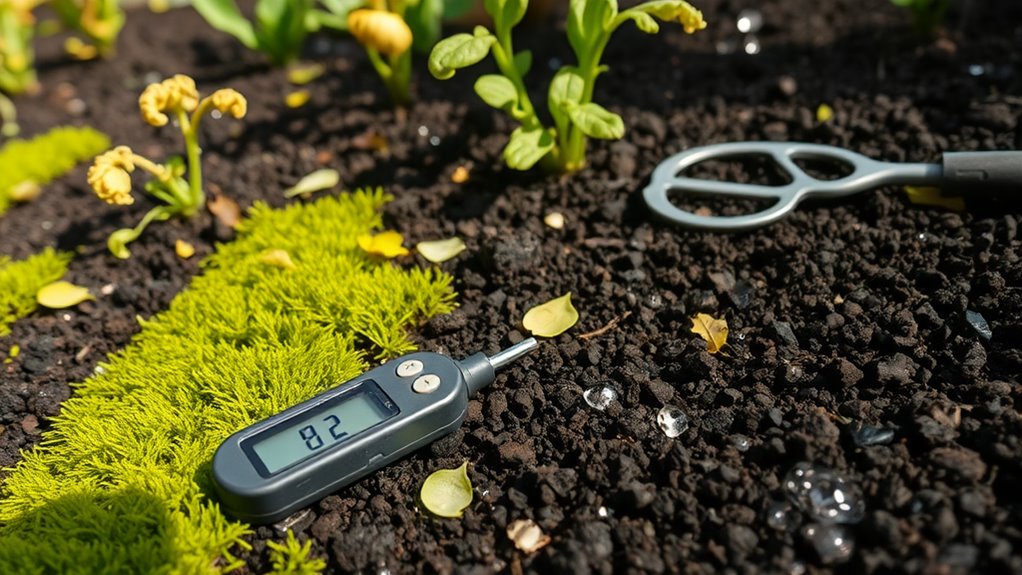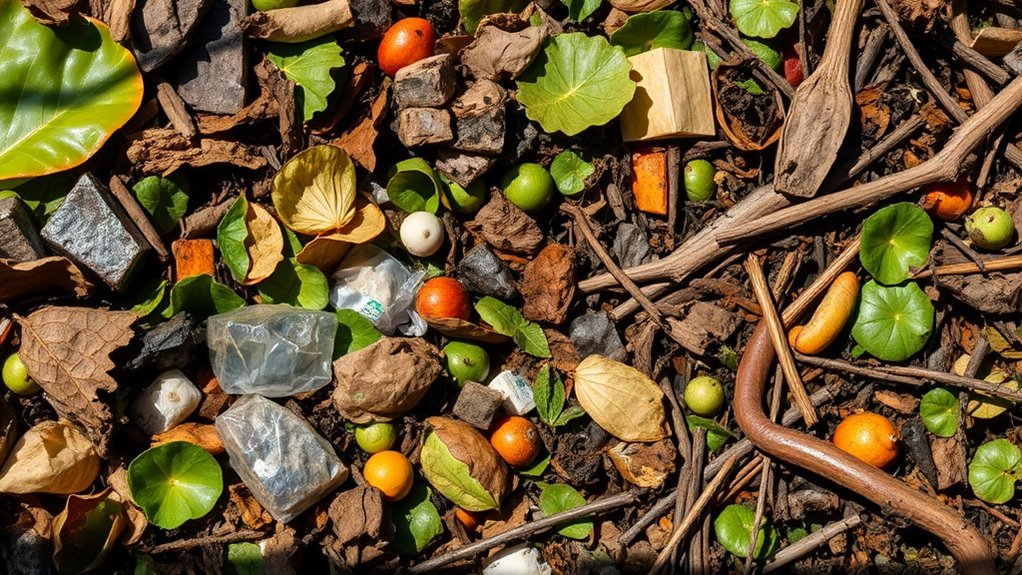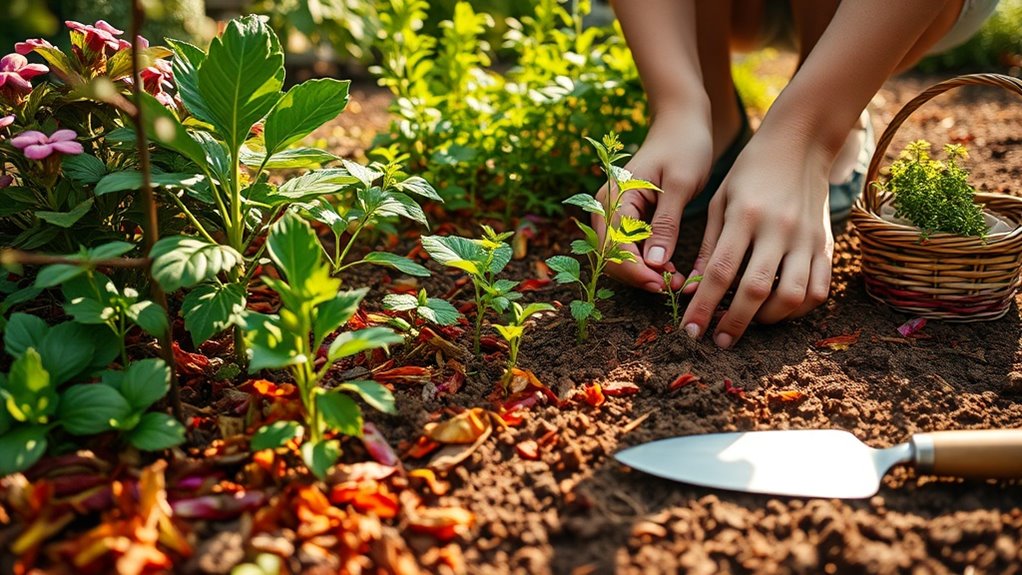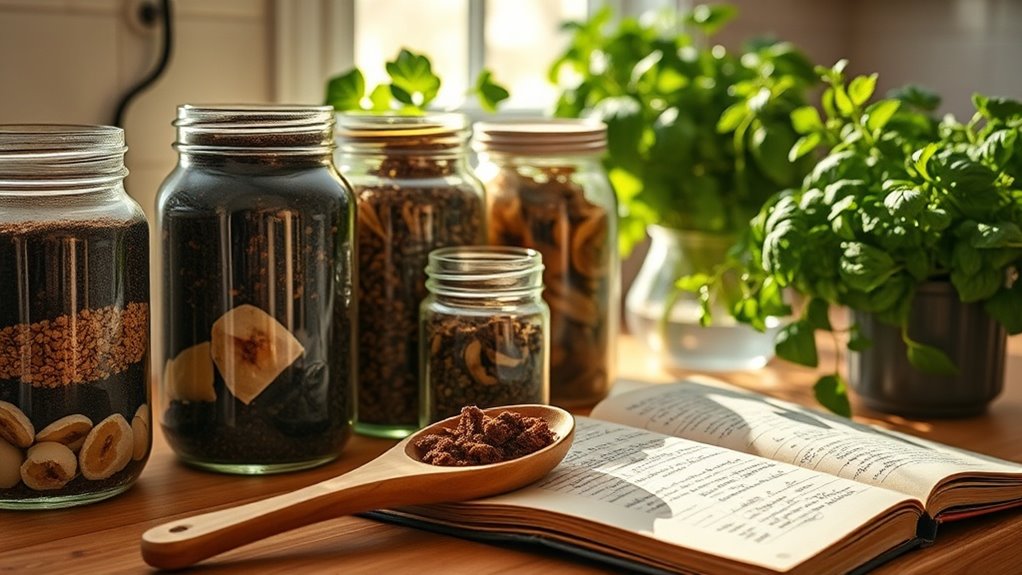Signs Your Soil Is Too Acidic-And What to Do About It
Your garden’s soil can be a silent yet telling canvas, revealing its acidity through subtle signs. If you notice stunted growth, yellowing leaves, or poor fruit development, your soil might be too acidic, typically indicated by a pH below 6.0. Understanding these symptoms is crucial for maintaining plant health, but how do you accurately assess and amend your soil? Exploring the next steps can lead to a thriving garden ecosystem.
Key Takeaways
- Stunted plant growth and yellowing leaves indicate nutrient deficiencies caused by acidic soil conditions.
- Soil testing reveals pH levels below 6.0, confirming acidity and the need for amendments.
- Apply lime, such as calcitic or dolomitic, to neutralize soil acidity and raise pH levels.
- Incorporate organic matter like compost to improve soil structure and nutrient retention.
- Select acid-resistant plants like blueberries and azaleas that thrive in lower pH conditions for better growth.
Understanding Soil Ph Levels
Soil pH levels are crucial for plant health and nutrient availability. When you measure pH, you’re assessing hydrogen ion concentration in the soil, which affects nutrient solubility. A pH below 6.0 indicates acidic soil, leading to nutrient deficiencies, particularly in calcium and magnesium. To fix acidic soil, you can apply lime, which raises pH by neutralizing acidity. Additionally, incorporating organic matter like compost can improve soil structure and microbial activity, aiding in nutrient absorption. Regular testing helps you monitor changes and adjust your management practices, ensuring optimal conditions for your plants’ growth and overall health. Understanding nutrient deficiencies is essential for addressing the problems caused by acidic soil.
Symptoms of Acidic Soil
Acidic soil can manifest several distinct symptoms that directly impact plant health and growth.
You may notice stunted plant growth, as roots struggle to absorb essential nutrients like nitrogen and phosphorus.
Leaf discoloration, particularly yellowing, often occurs due to nutrient deficiencies.
Additionally, you might see poor fruit and flower development, which indicates stress on the plants.
Weeds that thrive in acidic conditions may proliferate, further complicating your gardening efforts.
Soil testing can reveal pH levels below 6.0, confirming acidity.
Observing these signs can help you diagnose and address the underlying issues affecting your garden’s productivity. Signs of struggling garden soil can also provide insight into the overall health of your soil and guide your remediation efforts.
Effects of Acidic Soil on Plant Health
Acidic soil can significantly impact your plants’ health by causing nutrient deficiencies, particularly in essential elements like nitrogen and phosphorus. You may also notice impaired root growth, as the acidity disrupts root development and function. Furthermore, plants in acidic environments often become more susceptible to diseases, as their weakened state compromises their natural defenses. Additionally, soil health can be improved by adjusting pH levels, which enhances nutrient availability and overall plant vitality.
Nutrient Deficiency Issues
How does the pH level of your garden’s environment influence plant health? Acidic soil can lead to nutrient deficiencies, affecting your plants’ growth and vigor. Essential nutrients like nitrogen, phosphorus, and potassium become less available, causing chlorosis and stunted development.
| Nutrient | Availability in Acidic Soil |
|---|---|
| Nitrogen | Reduced |
| Phosphorus | Significantly decreased |
| Potassium | Moderately available |
To prevent these deficiencies, consider amending your soil with lime or organic matter. Regularly testing your soil can help you maintain balanced pH levels for optimal plant health.
Root Growth Problems
Soil acidity not only creates nutrient deficiencies but also significantly impacts root growth.
When the pH level drops, root systems struggle to develop properly, leading to stunted growth and poor anchorage.
Acidic conditions also limit beneficial microbial activity, which is essential for root health and nutrient uptake.
You may notice roots becoming discolored, underdeveloped, or even rotting due to excessive acidity.
Additionally, the availability of essential micronutrients like calcium and magnesium diminishes, further impairing root function.
To mitigate these issues, consider amending your soil with lime or organic matter to raise pH levels and promote a healthy root environment.
Disease Vulnerability Increase
What happens to your plants when soil pH levels drop significantly? They become more susceptible to diseases.
Acidic soil disrupts nutrient availability, particularly essential elements like calcium and magnesium, weakening your plants’ overall health.
This stress makes them less resilient against pathogens.
Furthermore, certain fungi thrive in low pH environments, increasing the likelihood of root rot and other fungal infections.
The imbalance in soil microbial communities also favors harmful organisms over beneficial ones, compromising your plants’ natural defenses.
Consequently, you may notice higher incidences of blight, wilts, and other diseases, ultimately affecting crop yield and quality.
Act quickly to amend your soil.
Testing Your Soil’s Ph
Testing your soil’s pH is crucial for understanding its acidity and optimizing plant health. Various methods, such as using pH testing kits or sending samples to a lab, can provide accurate measurements. Additionally, evaluating soil health through simple visual assessments can help you identify potential issues before they affect your plants.
Importance of Ph Testing
How can you ensure that your plants thrive in their environment?
Testing your soil’s pH is crucial for understanding nutrient availability.
Different plants require specific pH levels to absorb essential nutrients effectively.
If your soil is too acidic, it can hinder nutrient uptake, leading to deficiencies and poor plant growth.
Regular pH testing allows you to monitor soil health and make informed amendments, such as lime application to raise pH or organic matter to improve buffering capacity.
This proactive approach helps maintain optimal growing conditions, ensuring your plants receive the nutrients they need for robust health and productivity.
Testing Methods Overview
When aiming to determine your soil’s pH, several reliable methods can yield accurate results.
You can use a pH meter, which provides precise measurements through an electrode inserted into the soil.
Alternatively, pH test kits offer a more user-friendly option, allowing you to mix soil samples with a solution and compare color changes.
For a DIY approach, try the vinegar and baking soda tests: vinegar indicates acidity, while baking soda shows alkalinity.
Regardless of the method, ensure you collect samples from multiple locations and depths for a comprehensive analysis.
Regular testing will help you maintain optimal soil health.
Amending Acidic Soil
Amending acidic soil is essential for promoting healthy plant growth and optimizing nutrient availability. To raise soil pH, you can incorporate lime, specifically calcitic or dolomitic limestone, depending on your soil’s calcium and magnesium levels. Apply lime based on soil test results, typically 50 to 100 pounds per 1,000 square feet. Additionally, consider adding organic matter, such as compost, which can improve soil structure and nutrient retention. Essential soil ingredients play a crucial role in enhancing the overall health of your garden. Regularly monitor pH levels to ensure they remain within the optimal range of 6.0 to 7.0.
Choosing Acid-Resistant Plants
Choosing Acid-Resistant Plants
Selecting acid-resistant plants is crucial for successful gardening in acidic soil conditions.
To thrive, consider species like azaleas, rhododendrons, and blueberries, which naturally adapt to lower pH levels. Focus on native plants, as they often possess inherent tolerance. Assess the specific pH tolerance of each species before planting; some prefer slightly acidic, while others thrive in highly acidic environments. Additionally, ensure proper drainage to prevent root rot, common in overly wet conditions. Incorporating ideal potting conditions is essential for the health and productivity of acid-loving plants like blueberries.
Maintaining Balanced Soil Ph
Choosing acid-resistant plants is just the first step in managing your garden’s health.
To maintain balanced soil pH, regularly test your soil using a reliable pH meter or test kit.
Aim for a pH between 6.0 and 7.0 for most plants.
If your soil’s too acidic, consider adding lime, which neutralizes acidity and enriches calcium content.
Organic amendments like compost can also help balance pH while improving soil structure.
Additionally, avoid excessive nitrogen fertilizers, as they can lower pH.
Monitor your garden consistently, adjusting your soil management practices based on test results to ensure optimal growing conditions for your plants. Incorporating natural materials such as crushed eggshells can also enhance soil health by adding calcium and improving pH balance.





